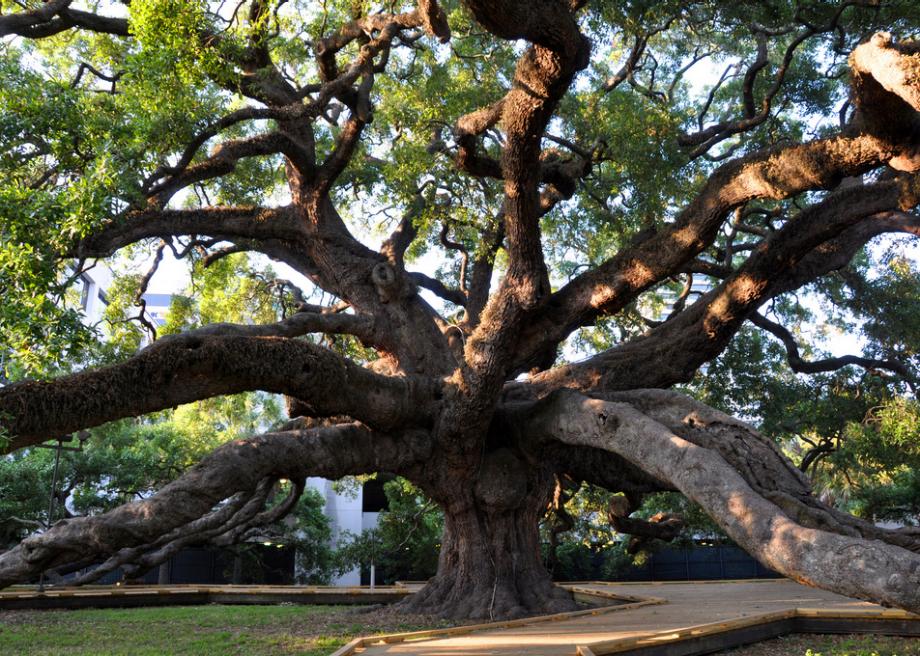Treaties, Trees, and Lies: How a Falsified News Story Saved a Tree
Atlas Obscura on Slate is a blog about the world’s hidden wonders. Like us on Facebook and Tumblr, or follow us on Twitter.
There are a number of “treaty oaks” found around America, usually singled out as the location of an important agreement or truce. But the treaty oak in Jacksonville, Florida, is just called that so no one will tear it down.
Believed to be about 250 years old, the many-limbed oak tree located in what is now known as Jesse Ball duPont Park has grown into a lazily wide circumference with thick branches sprouting off at all angles like a massive wooden cephalopod. However, the mighty arbor (which was originally known as just the Giant Oak) was almost the victim of urban sprawl.
As the city of Jacksonville grew in the 1930s, the large amount of land on which the tree sat began looking mighty appealing to developers. Fans of the ancient oak responded with somewhat shady action. Pat Moran, a local reporter, got together with a member of the Jacksonville Garden Club and devised a plan to save the tree involving him fabricating a news story about American Indians signing some kind of accord with white settlers beneath the tree, thereby making the oak a historic monument. The clever scheme worked, and the new Treaty Oak was saved.
Today the huge tree still stands and is kept in good health by regular preservation efforts, which are trying to ensure 400 more years of life for the oak.
More incredible places around the world:

